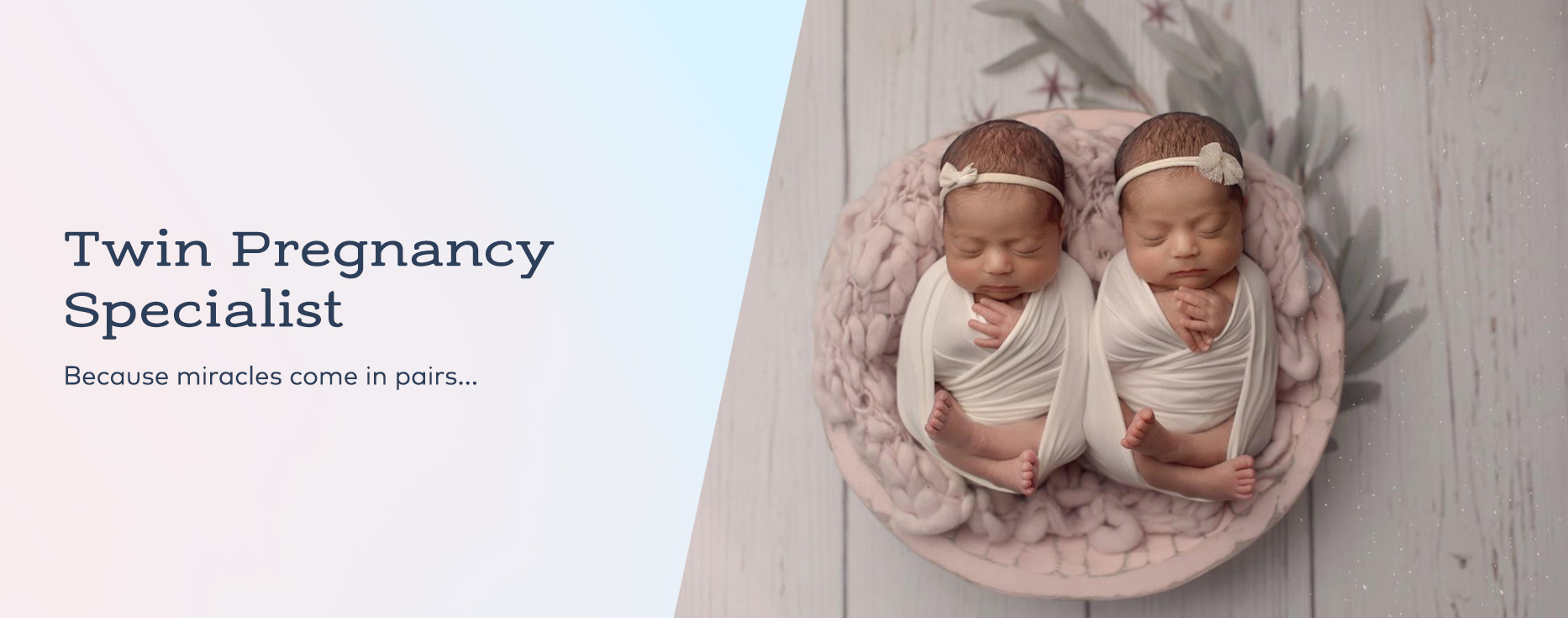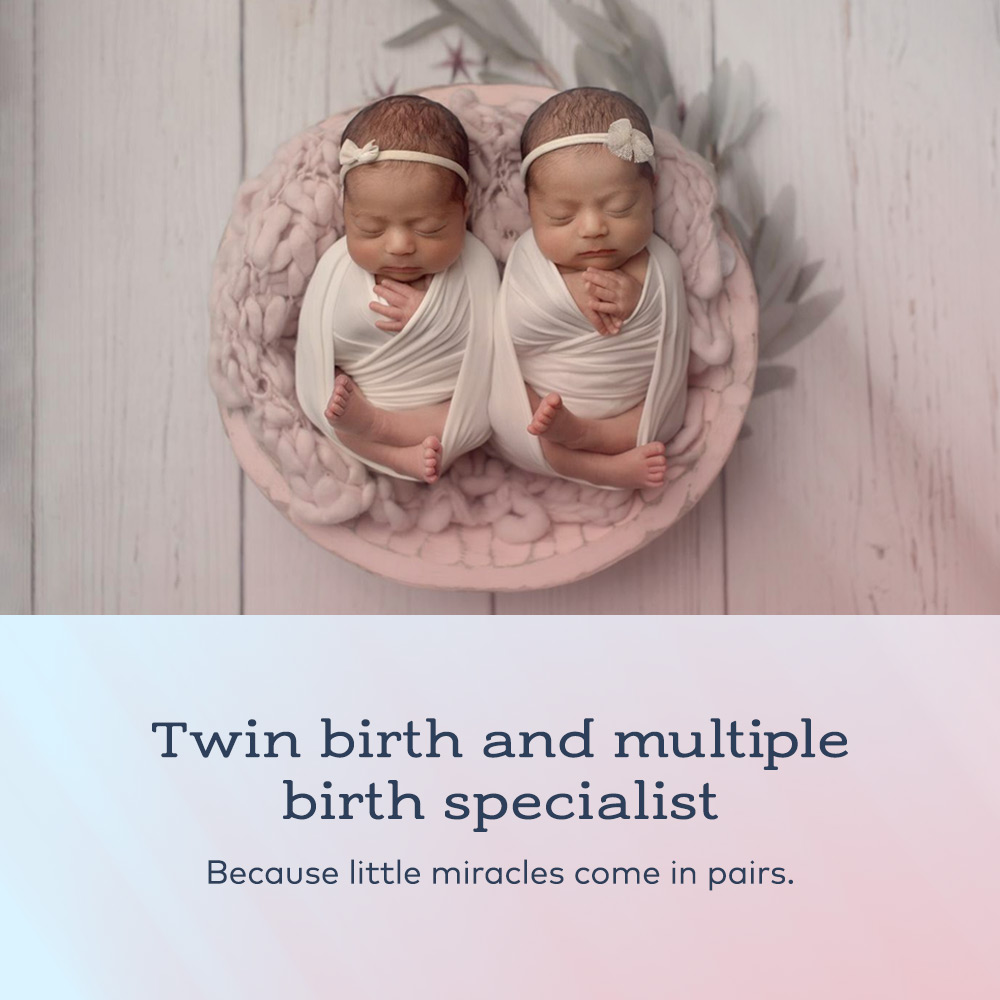Managing Multiples (Twins, Triplets and More)


As a maternal foetal medicine expert, Dr Shetty is highly competent at guiding parents through a multiple birth pregnancy and considers it “one of the most exciting, exhilarating and demanding” aspects of her job.
Here are your most asked questions about managing multiples.

Although twins can be conceived naturally, some other factors that increase the risk of multiple pregnancies include assisted fertility treatments, IVF and advancing age in mothers.
Having twins in the family, or having multiple pregnancies before are some other risk factors that increase the chance of twins or multiple births.
Fraternal twins or triplets are the most common type of twins and this phenomenon occurs when separate sperm fertilise separate eggs.
Each twin or triplet has their own amniotic sac and placenta. They may comprise a girl and a boy or be two girls or two boys.
Identical twins or triplets happen when a single egg splits into two or three fetuses and these babies can either share a placenta and sac or have them separately.
They also share the same “identical” physical traits and characteristics and are the same sex.
What are the common complications of multiple pregnancies?
The good news is that healthy multiples are born every day!
But we understand that twins or triplet pregnancies can be a stressful time for families. Some common risks associated with multiple pregnancies are:
– Miscarriage: There is increased risk of miscarriage and failed pregnancy
– Congenital or genetic abnormalities: Twins or triplets can have higher risk of chromosomal or genetic conditions. They can also have high risk of structural defects.
– Preterm birth: Did you know that rates of “premmie” delivery before 32 weeks are approximately 2% percent for singletons compared to 12.5% for twins. This increases with triplets or higher order multiples. A common cause of preterm birth is overstretching of your uterus and shortening of your cervix in twins.
– Fetal growth restriction: Twins or triplets are also at increased risk of growth restriction. Complications may include discordant growth with one twin smaller than the other.
– Other risks: gestational diabetes, high blood pressure and C-Section delivery along with twin-twin transfusion if one baby sharing a placenta is receiving too much blood and the other bub not enough.
– Rates of cerebral palsy are also four to eight times higher in multiple births than singletons, while another risk is cord entanglement, and careful surveillance with ultrasound is critical to monitor and help prevent this.
How can Dr Shetty help you?
Dr Shetty has received special ultrasound training at three fetal medicine centres across NSW to learn and deal with possible complications that may arise during multiple births.
Dr Shetty will offer you the highest level of care including:
– Early and regular ultrasounds to identify the type of twins and their complications.
– Monitoring your cervix length and offering medications or cervical procedures to reduce risk of preterm birth
– Some complications like twin-twin transfusion syndrome or selective growth restriction can only be identified by a fetal medicine expert so that these can be managed in time.
– Detailed morphology scan to look for any defects that might be missed elsewhere
– Regular growth scans to monitor the growth and wellbeing of your babies
– A birth plan that offers you the best possible outcome
– Postpartum support and assistance with her team of psychologists, neonatal experts, lactation support and midwives.
Where can I deliver twins and triplets?
Westmead private hospital has the required facilities to care for you and your babies if you have multiple pregnancy.
Some twins or triplet births may end in preterm birth or develop complications requiring you to give birth at a public tertiary hospital.
Dr Shetty is a staff specialist at Westmead public and if required can move your care to Westmead public hospital which is co-located with the Children’s Hospital at Westmead.
This allows Dr Shetty to provide her patients with the highest standard of private hospital care, whilst having access to tertiary NICU facilities if required. So that you can have the peace of mind and the best support available to you.

“I had to choose between my twins”…
After conceiving twins through IVF, we were overjoyed.
With a little boy already, the thought of welcoming two little girls into our family filled us with happiness.
However, at 17 weeks, our excitement turned to fear when I was diagnosed with severe fetal growth restriction.
One of our baby girls wasn’t growing and her placenta flow was abnormal. Two major fetal medicine centres in Sydney advised us to stop her heart, fearing her demise could impact her twin.
Devastated and desperate for hope, we sought a second opinion from Dr Shetty.
From our first consultation, we felt reassured by her capabilities and experience in managing such high-risk pregnancies.
Rather than giving up, she proposed close monitoring—weekly, sometimes even twice-weekly, with ultrasound scans to assess growth and blood flow.
Week after week, our girls continued to grow, defying the odds. The placenta flow remained stable and under Dr Shetty’s watchful eye, we reached 32 weeks.
At that point, as the blood flow began to worsen again, she advised delivery.
My twins arrived via C-section; a bit premature but strong. I was given medication to protect their lungs and brain, ensuring they had the best start possible.
Recovery was swift, allowing me to visit them in the neonatal ICU frequently.
They were small but resilient, thriving under the care of an exceptional medical team.
After a few weeks, we were finally discharged, bringing our girls home.
Even today, when we look at them, we feel immense gratitude—for the universe, for the skilled doctors and to Dr Shetty’s unwavering support and expertise.
Our family is complete and we feel truly blessed.
Stephanie Wright
Additional Reading


